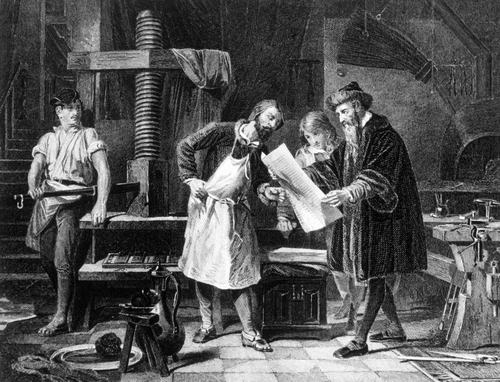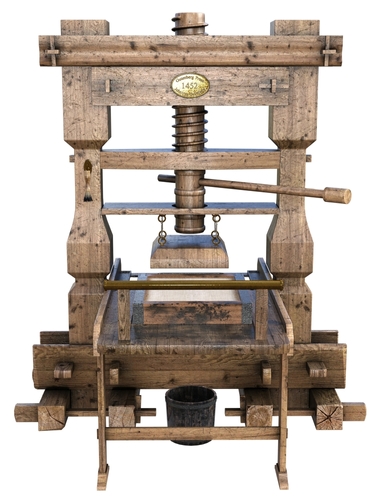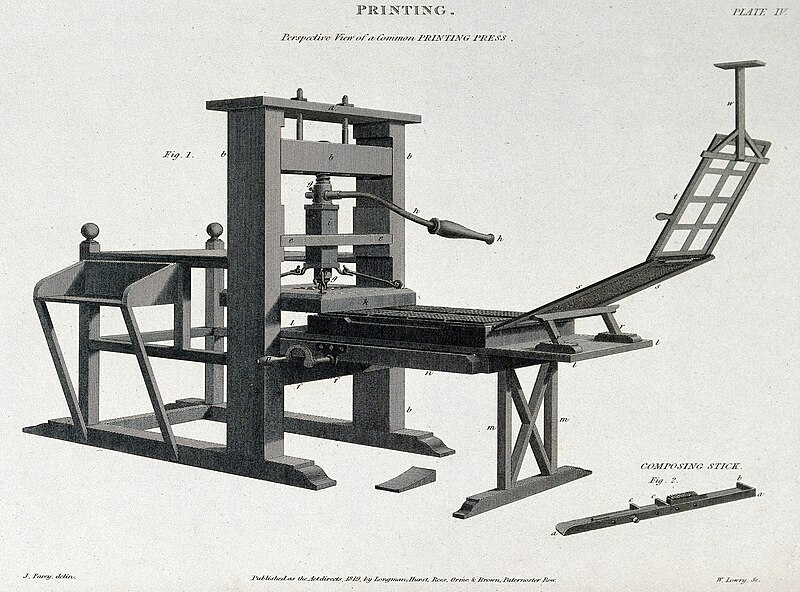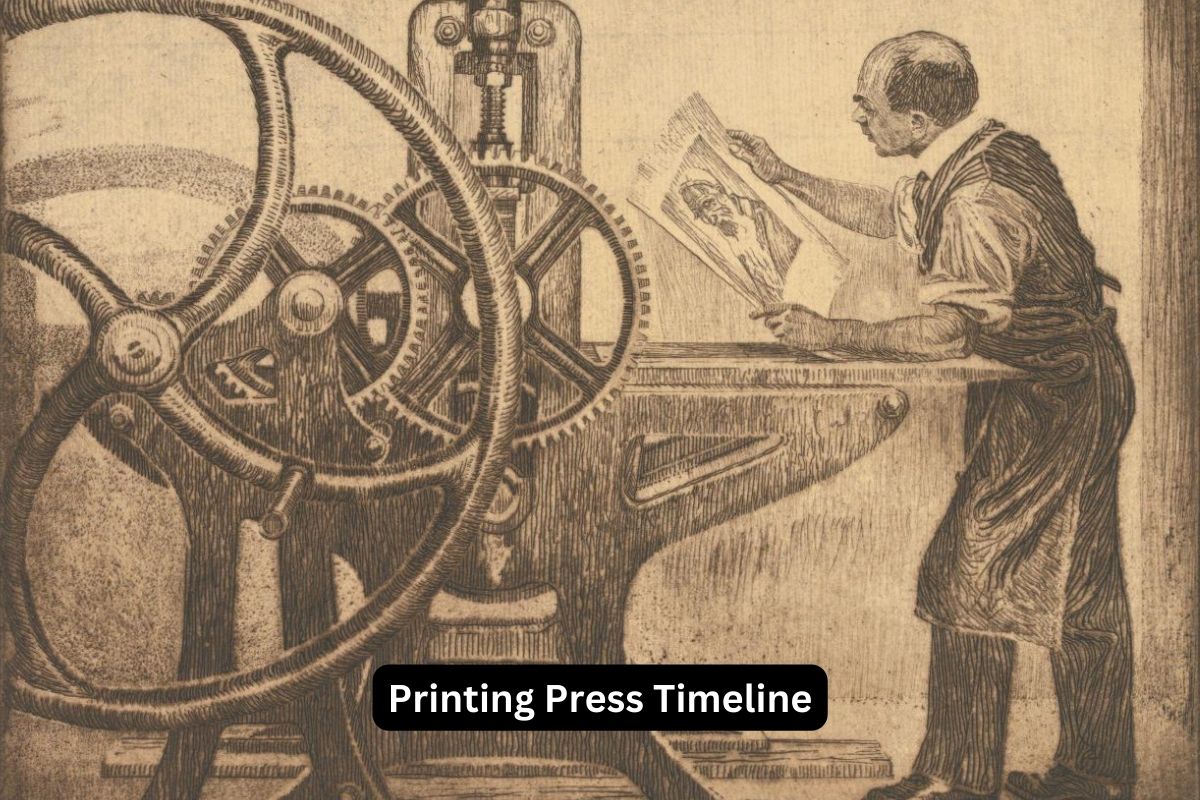The evolution of the printing press over the centuries has been a remarkable journey, transforming the way information is produced, disseminated, and accessed.
From Johannes Gutenberg’s pioneering movable-type press in the 15th century to the digital printing technologies of the 21st century, this journey has shaped the world of communication, knowledge sharing, and innovation.
In this overview, we will explore the key milestones in the history of the printing press, highlighting its profound impact on society and technology.
| Century | Key Developments in Printing Press Technology |
|---|---|
| 15th Century | – Johannes Gutenberg’s invention of the movable-type printing press. – Printing of the Gutenberg Bible. |
| 1450s | – Spread of printing press technology across Europe. |
| 1460s | – Establishment of printing houses in Venice, Rome, and Paris. |
| 1470s | – Introduction of printing presses in England and the Netherlands. – William Caxton sets up the first English printing press. |
| Late 15th Century | – Reduction in the cost of printed books, increasing accessibility. |
| 16th Century | – Flourishing production of books during the Renaissance. – Martin Luther’s 95 Theses printed, sparking the Protestant Reformation. |
| 17th Century | – Expansion of printing press technology to Asia and the Americas. |
| 18th Century | – Introduction of steam-powered printing presses. |
| 19th Century | – Advancements in paper production and rotary printing presses. |
| 20th Century | – Adoption of offset printing, phototypesetting, and digital printing. |
| Late 20th Century | – Impact of personal computers and desktop publishing software. |
| 21st Century | – Emergence of 3D printing technology. |

Timeline of the Printing Press
15th Century
Johannes Gutenberg’s Invention (c. 1440):
Johannes Gutenberg, a German inventor, is credited with the groundbreaking invention of the movable-type printing press.
Also Read: Facts About the Printing Press
Prior to this, books were painstakingly copied by hand, making them rare and expensive. Gutenberg’s press allowed for the mass production of books by using individual metal letters and characters that could be rearranged for each page, significantly speeding up the printing process.
The Gutenberg Bible (1450s):
One of the most famous achievements of Johannes Gutenberg’s press is the printing of the Gutenberg Bible, also known as the 42-line Bible. This marked the first major book printed using movable type.
Also Read: Johannes Gutenberg Facts
The Gutenberg Bible became a symbol of the power of the printing press to disseminate knowledge and played a crucial role in the spread of the Renaissance and religious reform movements.

16th Century:
Spread of Printing Technology: In the 16th century, Gutenberg’s invention rapidly spread across Europe. This dissemination of the printing press technology allowed for the establishment of printing houses in various European cities.
As a result, the production of books, pamphlets, and other printed materials increased significantly, making literature and knowledge more accessible to a wider audience.
Martin Luther and the Protestant Reformation (1517): In 1517, Martin Luther, a German monk and theologian, utilized the printing press to publish his famous “95 Theses,” which criticized the Catholic Church’s practices, especially the sale of indulgences.
Luther’s ideas quickly spread throughout Europe, leading to the Protestant Reformation, a religious and political upheaval that had a profound impact on European history. The printing press played a crucial role in the rapid dissemination of Luther’s ideas and the subsequent debates that followed.
17th Century:
Global Spread of Printing Press Technology: During the 17th century, the printing press technology continued to spread beyond Europe. Printing presses were established in various parts of the world, including Asia and the Americas.
This expansion facilitated the exchange of ideas and the dissemination of information on a global scale. It contributed to the development of local publishing industries in different regions, each with its own cultural and linguistic nuances.
Emergence of Newspapers: The 17th century witnessed the emergence of newspapers, which became an important medium for disseminating news and information. Newspapers allowed for timely reporting of events and helped shape public opinion.
The ability to quickly print and distribute newspapers played a pivotal role in the development of modern journalism and the public’s access to current affairs.

18th Century:
Steam-Powered Printing Presses: The 18th century saw a significant technological advancement in the form of steam-powered printing presses. Steam engines, initially developed for various industrial applications, were adapted to power printing presses.
These steam-powered presses greatly increased the speed and efficiency of printing. They could produce larger quantities of printed materials, making books, newspapers, and other publications more readily available to a growing readership.
This innovation revolutionized the printing industry, further reducing the cost of printed materials and enabling broader access to information.
19th Century:
Advancements in Paper Production: In the 19th century, there were notable improvements in paper production technology. The development of wood pulp papermaking processes, such as the Fourdrinier machine, made paper production more efficient and cost-effective.
This led to a reduction in the cost of paper, a crucial component of printing, further contributing to the affordability and widespread availability of printed materials.
Rotary Printing Presses: The introduction of rotary printing presses in the 19th century marked another significant development. Rotary presses used cylindrical rollers to apply ink to the printing surface, allowing for even faster printing.
These presses were particularly well-suited for high-volume jobs like newspaper production. The increased speed and output of rotary presses played a crucial role in meeting the growing demand for newspapers and magazines during this period.
20th Century:
Offset Printing: The 20th century saw the widespread adoption of offset printing, a method that significantly improved the quality and efficiency of the printing process. Offset printing involves transferring ink from a plate to a rubber blanket and then onto the printing surface.
This indirect printing method produced sharper and more consistent results compared to earlier techniques. It became the standard for high-quality printing of books, magazines, and commercial materials.
Phototypesetting and Digital Printing: Throughout the 20th century, there were further innovations in typesetting and printing technology. Phototypesetting, which replaced hot metal typesetting, used light to project characters onto photosensitive paper or film.
This allowed for greater flexibility in typography and layout. Later in the century, digital printing technologies emerged, enabling the direct transfer of digital images and text to paper. Laser and inkjet printers made it possible to produce documents rapidly and affordably from digital files, revolutionizing desktop publishing and small-scale printing.
